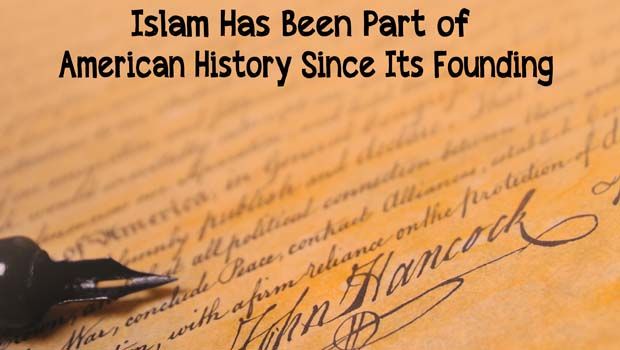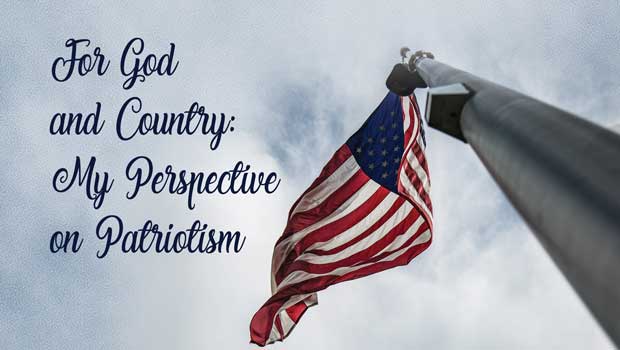Muslims are feeling unwelcome in America today, but followers of Muhammed were living here before the arrival of English in Spanish-controlled Florida and French Louisiana, where slaves were imported from the Senegambia region of Africa, home to a large Muslim population.
Muslims wish to be seen as Americans, and a look at America’s Islamic roots proves that they have every right to be – even more, perhaps, than those who rail against them.
Influenced by the tolerance of the Enlightenment, America’s founders considered Islam’s place in the new republic despite widespread fear of Barbary pirates and a sense of European rivalry with the Ottoman Empire. As befitting a student of law in a religiously diverse land, Thomas Jefferson purchased a Quran to learn about the Islamic legal code – the same Quran that was used in the swearing in of Muslim Keith Ellison to the U.S. Congress. In 1776, John Adams published “Thoughts on Government,” which praised the prophet Muhammad as a “sober inquirer after truth.” Ben Franklin set up a non-sectarian meeting house in Philadelphia, declaring in his autobiography that “even if the Mufti of Constantinople were to send a missionary to preach Mohammedanism to us, he would find a pulpit at his service.”
Tea Partiers occasionally know and distort these facts, but they are completely ignorant about another side of American Islam. Until recently, the study of the African transmission of Islam to America has been neglected, partly because materials are scarce, and partly because early observers were often ignorant of Islam or had reasons for downplaying the fact that God-fearing, literate people among the enslaved had to be written off as heathen and backwards in order to justify the institution.
And yet the numbers of enslaved Africans who were Muslims was significant: Conservative estimates put the number at 10 percent of all slaves, with some estimates running as high as 30 percent. A hodgepodge of sources – from plantation records to runaway slave advertisements to WPA interviews – show that Muslims went to great lengths to observe their religion; that Islam was a marker of status in the larger African American society; and that African American culture reflects the influence of early Muslims. On Sapelo Island, Georgia, for example, the congregation of the First African Baptist Church always prays to the east, the direction in which the church is pointed, and bodies are buried pointing to the east. The Nation of Islam may have been the 20th-century manifestation of a very ancient connection to a religion that had lived on in the South for centuries among African Americans even though it was overtaken by Christianity. Historian Michael Gomez points out that Elijah Muhammad, born in 1898 in Georgia, grew up at a time when Islam may still have been practiced by African-born Muslims, and the children and grandchildren of early Muslims were likely aware of their Islamic heritage.
The real foreign presence is Islamophobia, which is completely at odds with America’s founding principles.
On plantations throughout the South, particularly in the early period of slavery, it would have been possible to see enslaved Africans with names like Mustapha and Fatima kneeling on prayer mats, their faces turned toward the rising sun. (Writing of “Arabic-Africans” along the coast of Georgia, Joel Chandler Harris called them “not the most numerous, but the most noticeable” type.) Some planters particularly sought slaves from Senegambia for their knowledge of rice cultivation, and some Southern slave owners considered Muslims superior to non-Muslims as workers, though others considered their education and literacy to be dangerous.
Polls show that Americans remain unfamiliar with Islam, and according to the ACLU, anti-mosque activity has bubbled up in more than half of U.S. states in the last five years. Yet Islam is inextricably woven into the fabric of American history, from the distinctive service of Muslims in all American wars, including the Revolution, to the legacy of their descendents, which include notable figures. (Abolitionist Frederick Douglass changed his name from Frederick Bailey, and it is possible that the name “Bailey” is a form of the Arabic common name “Bilali.”)
Muslims wish to be seen as Americans, and a look at America’s Islamic roots proves that they have every right to be – even more, perhaps, than those who rail against them. It’s time to clarify the confusion about the role of Islam in early America and remind ourselves that far from being a foreign presence, Muslims have exerted an influence on American culture even greater than their numbers would suggest from the very beginning. The real foreign presence is Islamophobia, which is completely at odds with America’s founding principles.
For further information on America’s Islamic roots, see Allan D. Austin’s “African Muslims in Antebellum America.” Helpful articles include Michael Gomez’s “Muslims in Early America” published in the Journal of Southern History and Thomas Custis Parramore’s “Muslim Slave Aristocrats in North Carolina” published in the North Carolina Historical Review. I was aware of this history as a child because the last historian mentioned is my late father.





